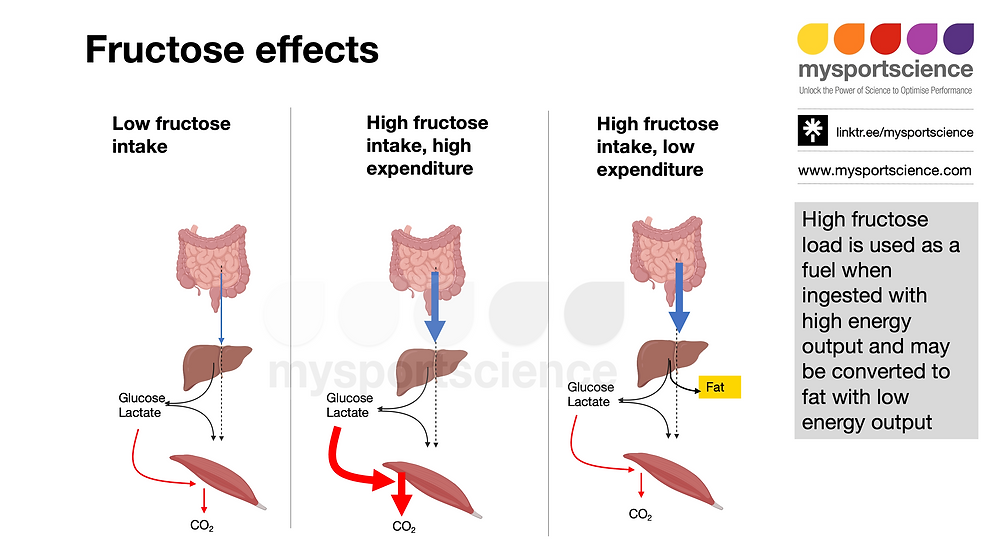Fructose, often seen in the context of sports nutrition, presents an intriguing avenue for endurance athletes aiming to enhance performance. While traditionally overshadowed by glucose and fatty acids, fructose offers unique metabolic benefits that can be strategically integrated into an athlete’s fueling repertoire, especially during long-duration events.
Understanding fructose absorption is crucial for optimizing its use in performance settings. Unlike glucose, which relies on the SGLT1 transporter for absorption, fructose employs the GLUT5 transporter. This distinction means that fructose can be absorbed when glucose transport becomes saturated, particularly during prolonged exertion. This mechanism allows athletes to consume higher carbohydrate loads without gastrointestinal distress—an essential factor in endurance events where maintaining gut tolerance is paramount.
However, it’s important to note that consuming fructose in isolation can lead to gastrointestinal issues, especially in larger quantities. Athletes should, therefore, consider combining fructose with glucose or maltodextrins. When ingested together, these carbohydrates enhance each other’s absorption and utilization, allowing athletes to consume greater amounts of carbohydrates during training and competition. Research suggests an optimal carbohydrate ratio of 2:1 (glucose to fructose) for maximizing energy intake without adverse effects, particularly when aiming for an intake rate of about 90 grams of carbohydrates per hour during races.
In terms of metabolic impacts, fructose is primarily metabolized in the liver and converted to lactate, which then serves as a fuel source for muscles. This two-step metabolism means that fructose is slower to process than glucose, yet it can provide an effective energy boost when balanced correctly within an athlete’s nutritional strategy. Post-exercise, replenishing glycogen stores is critical. While glucose is more effective for muscle glycogen recovery, fructose plays a complementary role in restoring liver glycogen. A post-exercise intake that combines both can facilitate optimal recovery.
The potential health implications of fructose are often discussed in broader terms, yet the focus for endurance athletes should remain on context and quantity consumed. Excessive fructose intake, particularly when combined with a sedentary lifestyle, can contribute to numerous health issues such as insulin resistance and liver fat accumulation. Nonetheless, studies indicate that these negative effects arise primarily from overfeeding scenarios—where caloric intake exceeds energy expenditures. For athletes engaged in regular intense training, this scenario is rarely an issue, provided that they maintain balance between their caloric intake and energy output.
As endurance athletes, timing nutrient intake strategically around training sessions—especially in prolonged and strenuous conditions—can enhance performance and recovery. Consuming a combination of fructose and glucose immediately before and during exercise can provide a steady stream of energy and manage fatigue effectively. This strategy is particularly beneficial during longer workouts and events when glycogen depletion is a concern. Moreover, the energy-rich profile of solid or liquid carbohydrate sources containing both fructose and glucose ensures sustained energy without compromising gut integrity.
Furthermore, focusing on metabolic efficiency is essential in the context of repeated endurance events. The utilization of fructose may contribute positively during long training sessions and races, helping athletes tap into alternative energy pathways that are less likely to be exhausted. By diversifying carbohydrate sources, athletes can enhance their metabolic flexibility—an important trait for endurance performance, particularly in challenging conditions where resources may become limited.
Hydration strategies also tie into the effective use of fructose for endurance athletes. The carbohydrate composition, including fructose, in hydration solutions should be balanced with fluid intake to ensure optimal absorption and minimize gastrointestinal discomfort. Fructose, when paired with adequate hydration, can support sustained energy levels, particularly when long races push the boundaries of endurance and hydration status.
In summary, fructose holds significant promise for endurance athletes looking to enhance performance through informed nutritional strategies. Its selective absorption and metabolic pathways, when utilized correctly alongside glucose, can improve endurance, optimize recovery, and support overall energy management during prolonged efforts. Athletes should focus on timing carbohydrate consumption around their training and racing to fully leverage the benefits that fructose has to offer.
A practical takeaway would be to experiment with a glucose-fructose mix in training sessions to identify personal tolerance levels and equations for maximizing carbohydrate intake, paving the way for improved performance in races where every gram of carbohydrate can make a difference.
